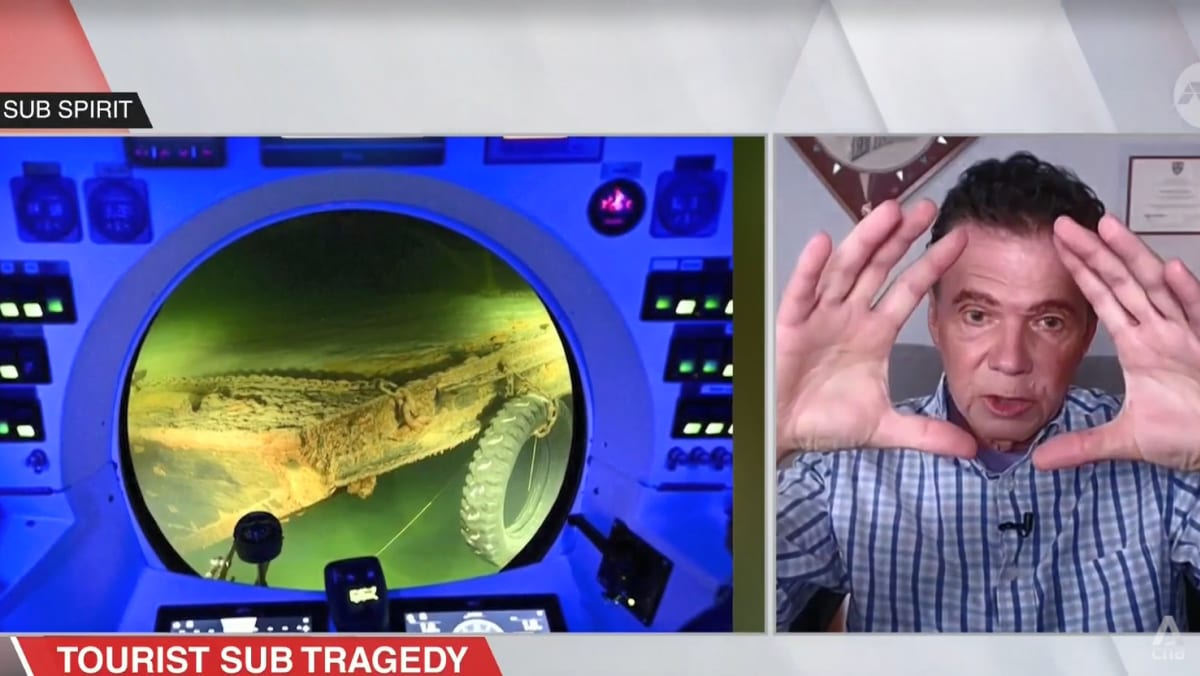‘Pieces of the Titanic fell on us’: Scientist recounts terrifying experience of getting stuck in Titanic shipwreck
Following two and a half hours of a corkscrew descent into the depths of the ocean, the immense wreckage of the Titanic loomed in front of the sub.
There, the men paused for a moment of prayer for the 1,496 victims of the gigantic ship, once claimed by its builders as practically unsinkable.
STUCK UNDER TITANIC’S PROPELLER
After touring the Titanic’s bow, the sub was heading towards the stern of the wreck, when Dr Guillen noticed they were travelling too fast.
Their vessel had been caught in a fast-moving current, causing it to crash into one of the sunken ship’s giant propellers, and become lodged under its massive blades.
“Pieces of the Titanic fell on us, and I knew immediately we were in crisis,” he recalled.
Amid the engine’s roars and grunts as Viktor desperately tried to jostle the vessel out of its stuck position, Dr Guillen experienced a “rollercoaster of emotions”.
“As a scientist, I naturally tried to figure out a solution to our problem at first. But I quickly realised there was no viable way to escape, there was no way out,” he said.
“I experienced enormous sadness. I’ll never forget that crushing sadness. I felt like the whole weight of the ocean was on my shoulders. I was basically buried alive at the bottom of the Atlantic Ocean.”
Dr Guillen said he thought of his wife and how he would never see her again.
“This voice was in my head – I’ll never forget for the rest of my life – it said, ‘This is how it’s going to end for you’,” he continued.
“And then I experienced an enormous peace that I cannot explain.”
Dr Guillen has explored the North and South Poles, and reported on the Gulf War, among many risky adventures and near-death experiences in his capacity as a scientist and a journalist.
However, the moments pinned under debris some 4km beneath the surface truly felt like “the end of the line”, he said.
About half an hour into the ordeal, the strained noises of the engine calmed and Dr Guillen said the sub felt like it was floating.
Viktor, who was a former Russian MiG fighter jet pilot, had managed to dislodge the vessel from the blades of the propeller.
“This was a man used to dealing with life and death situations, keeping his cool under pressure. I wouldn’t be here talking with you today if it weren’t for Viktor’s skills,” he said.
DANGERS OF DEEP-SEA EXPLORATION
Dr Guillen described the Mir1 submersible as a hardy vessel made to withstand hostile deep-sea conditions and built “for a serious purpose”. The sub is meant for scientific research and has made deep water exploration trips many times.
In contrast, industry leaders have for years warned of a lack of certification and possible safety issues with the Titan submersible, which was found in pieces on the ocean floor on Thursday after a failed tourism trip to the Titanic.
“There are legitimate questions to be asked, as to whether (the Titan) was genuinely seaworthy. Should it have been allowed to go down there?” Dr Guillen asked.
For all the latest world News Click Here

